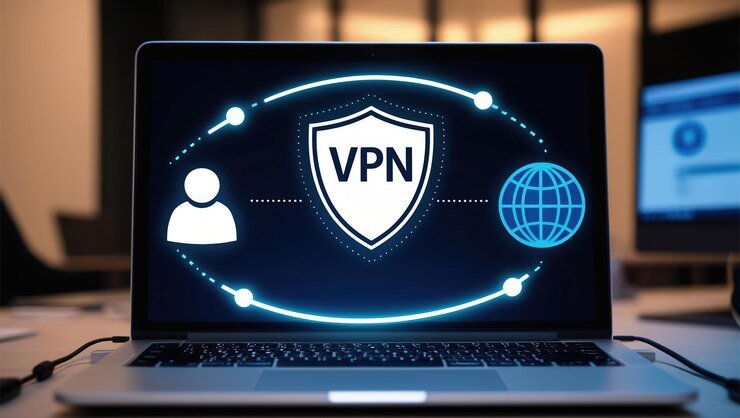
Have you ever wondered what goes on behind the scenes when you connect to the internet? Your IP address is a crucial player in this digital world, acting as your unique identifier online. But how can i find my ip address, and why should you care about it? Whether you’re browsing social media, streaming your favorite shows, or simply checking your emails, understanding your IP address can enhance your online experience. Let’s dive into the details of this essential component of internet connectivity and unravel its mysteries together!
What is an IP Address?
An IP address, or Internet Protocol address, is a numerical label assigned to each device connected to a computer network. Think of it as your online home address. Just like every house has its unique street number, each device needs an IP address to communicate over the internet.
These addresses come in two primary formats: IPv4 and IPv6. IPv4 consists of four sets of numbers separated by dots, while IPv6 uses eight groups of hexadecimal numbers separated by colons. The transition from IPv4 to IPv6 was essential due to the growing number of devices on the internet.
Every time you connect online—whether it’s through your smartphone or laptop—your device sends and receives data using its IP address. This system ensures that information reaches its correct destination efficiently and securely.
The Purpose of an IP Address
An IP address serves as a unique identifier for devices connected to the internet. Think of it as your digital address that allows data packets to find their way across the vast network.
Without an IP address, devices would struggle to communicate effectively. It enables seamless interactions between servers and clients, ensuring information travels where it’s needed.
Additionally, an IP address helps manage traffic online. Just like postal services rely on addresses to deliver parcels, the internet uses these numerical codes to route data efficiently.
Every time you send an email or browse a website, your device’s IP address plays a crucial role in establishing connections. Essentially, it is foundational for our daily online experiences.
Types of IP Addresses
IP addresses come in two main types: IPv4 and IPv6.
IPv4 is the most common format, made up of four sets of numbers separated by periods. You’ll often see it represented like this: 192.168.1.1. With only about 4 billion possible combinations, IPv4 has become scarce due to the growing number of devices online.
Enter IPv6, which was developed to solve this issue. It uses a longer string of hexadecimal digits, allowing for an almost limitless number of unique addresses—over 340 undecillion options! This modern upgrade ensures that we won’t run out anytime soon.
Additionally, IP addresses can be static or dynamic. Static IPs remain constant over time, making them ideal for servers and applications needing consistent access points. Dynamic IPs change periodically and are typically assigned by your Internet Service Provider each time you connect to the internet.
Benefits and Limitations of an IP Address
how can i find my ip address serves as your unique identifier on the internet. This allows devices to communicate and share information seamlessly. The primary benefit is connectivity; it enables you to access websites, stream videos, and interact with online services.
However, there are limitations. For instance, an IP address can expose your geographic location, raising privacy concerns. If someone knows your IP address, they might track your online activities or attempt cyberattacks.
Moreover, dynamic IP addresses change frequently. This can lead to challenges when trying to maintain consistent connections for certain applications or remote work setups.
While using a static IP offers stability for businesses and servers, it also comes with increased security risks if not adequately protected. Understanding these benefits and limitations helps users navigate their digital presence more effectively while safeguarding their information.
Why is it important to understand your IP Address?
Understanding your IP address is crucial for several reasons. First, it serves as your online identification. Every device connected to the internet needs one to communicate effectively.
Second, knowing your IP address can help you troubleshoot connection issues. If you’re experiencing slow speeds or connectivity problems, pinpointing your IP can guide you in diagnosing the issue.
Additionally, awareness of your IP provides better security insights. Cyber threats often target unsuspecting users based on their public addresses. Understanding this helps you take preventive measures.
Moreover, if you’re accessing location-based content or services, being aware of your IP allows you to manage privacy settings and avoid unwanted tracking by websites.
Businesses that rely on data analytics benefit from understanding how users interact with their platforms through unique identifiers like an IP address.
The Different Types of IP Addresses
IP addresses come in two main flavors: IPv4 and IPv6.
IPv4 is the older format, consisting of four sets of numbers separated by periods. This setup allows for about 4 billion unique addresses, which sounds like a lot until you realize how quickly we’re running out of them.
Enter IPv6. This newer version was developed to accommodate our growing need for IPs. It uses eight groups of hexadecimal digits, creating an almost limitless pool—over 340 undecillion combinations!
Static and dynamic are another way to categorize IP addresses. A static IP remains constant, while a dynamic one changes over time based on your network connection.
Public and private also play essential roles in networking. Public IPs allow devices to connect with the broader internet, while private ones only communicate within local networks.
Each type serves specific purposes in today’s digital world, making it crucial to understand their differences.
How to Find Your IP Address
how can i find my ip address is a straightforward process. You can discover it through various methods, depending on your device and preference.
For Windows users, simply open the Command Prompt. Type “ipconfig” and hit enter. Your IPv4 address will appear next to “IPv4 Address.”
If you’re using a Mac, go to System Preferences, click on Network, select your active connection, and look for the IP address displayed there.
Smartphone users have options too. On Android devices, navigate to Settings > About Phone > Status. For iPhones, head over to Settings > Wi-Fi and tap the information icon next to your network.
Alternatively, numerous websites allow you to check your public IP with just one click. Just search “What’s my IP” in Google or visit sites like WhatIsMyIP.com for instant results without any fuss!
Protecting Your IP Address
Your IP address is like a digital fingerprint. It reveals your location and can be used to track your online activities. Protecting it is essential for maintaining privacy.
One effective method is using a Virtual Private Network (VPN). A VPN encrypts your internet connection, making it more difficult for anyone to monitor your online behavior or trace you back to your real IP address.
Another option is utilizing proxy servers. These act as intermediaries between you and the websites you visit, masking your actual IP address from prying eyes.
Regularly updating your security settings on devices adds another layer of protection. Firewalls and antivirus software help shield against potential threats that could exploit vulnerabilities linked to your IP address.
Staying informed about phishing scams also plays a vital role in safeguarding personal information associated with your IP. Be cautious when sharing data online, even on seemingly secure sites.
Common Misconceptions about IP Addresses
Many people believe that an IP address is just a random string of numbers. In reality, it serves as a unique identifier for every device connected to the internet. It’s like your home address, but on the web.
Another common misconception is that IP addresses are permanent. While some can remain static, many change frequently, especially with mobile devices and residential connections.
Some think they can hide their IP address completely by using incognito mode or clearing cookies. However, this doesn’t obscure their actual online identity; it merely limits data tracking in certain situations.
There’s confusion about privacy. An IP address reveals your general location but does not provide detailed personal information like your name or phone number. Understanding these misconceptions helps demystify what an IP address really represents in our digital lives.
Conclusion
Understanding your IP address is essential for navigating the digital landscape effectively. It serves as a unique identifier that allows devices to communicate over the internet, ensuring you can access websites and services seamlessly.
Recognizing the types of IP addresses and their purposes helps demystify how data travels across networks. While there are evident benefits, such as enabling online communication and geo-location, limitations exist too—especially concerning privacy.
Knowing how to find your IP address empowers you to troubleshoot network issues or configure settings on various devices. Additionally, being aware of protective measures enables better security practices in an age where cyber threats are prevalent.
Dispelling common misconceptions about IP addresses further enhances understanding, allowing users to engage with technology confidently. The more informed you are about your own digital footprint, the better equipped you’ll be to navigate both personal and professional realms online.
As we continue exploring the vast world of technology, having a grasp on something as fundamental as an IP address can make all the difference in fostering safer browsing experiences while maximizing connectivity.
RELATED POSTS
View all


